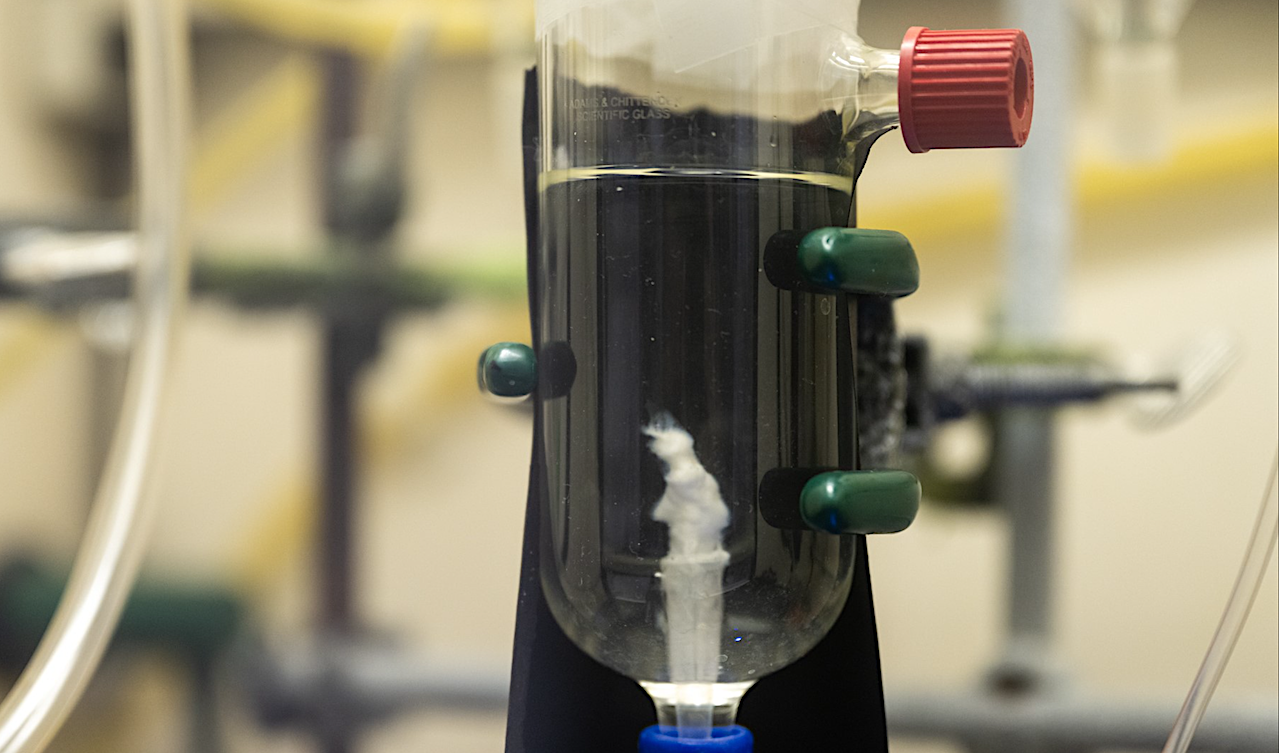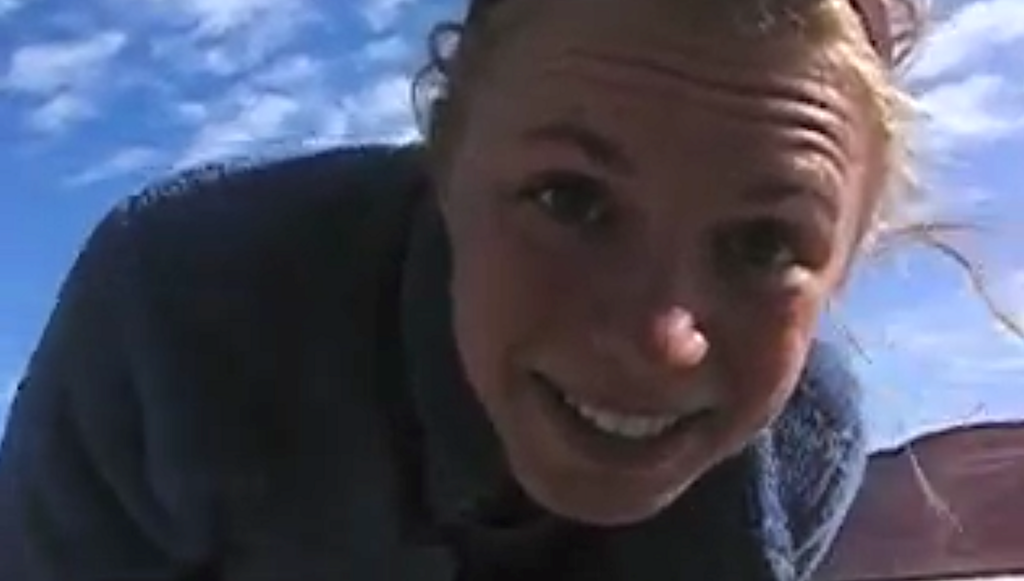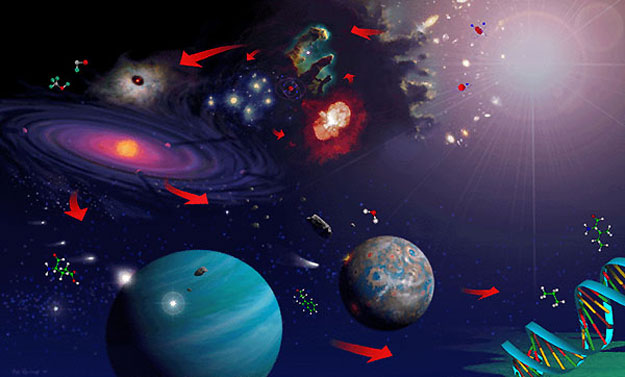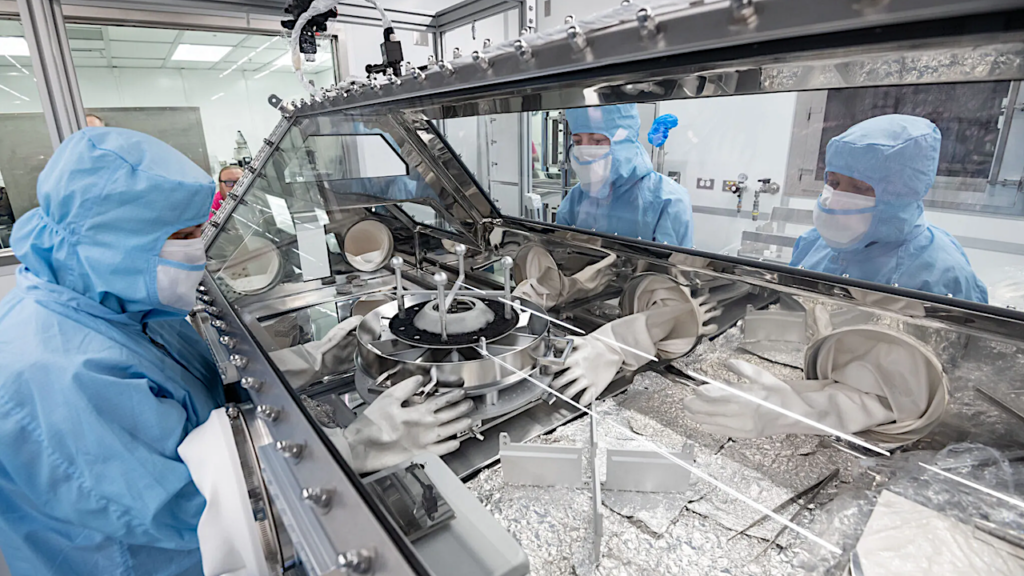Students At Underserved Institutions Intern In JPL’s Origins And Habitability Lab

At the agency’s Jet Propulsion Laboratory, interns from Cal State LA are learning key skills studying the origins of life.
What does wastewater management in Los Angeles have to do with the search for life on Mars? Eduardo Martinez certainly didn’t make the connection when he was pursuing a master’s in civil engineering. Not at first. Then his professor pointed him toward an internship opportunity at NASA’s Jet Propulsion Laboratory for astrobiology, the study of life’s origins and the possibility of life beyond Earth.
That professor, Arezoo Khodayari of California State University, Los Angeles, helped Martinez understand the chemistry common to both fields. Soon, Martinez saw that just as phosphorous, nitrogen, and other chemicals in wastewater can fuel algal blooms in the ocean, they can potentially provide energy for microbial life on other planets.
“Once I got a taste of planetary science, I knew I needed more,” said Martinez, who did the internship while finishing his degree at Cal State LA, where more than 70% of students are Latino and few have historically participated in NASA research. “If not for JPL, I would have stopped with my master’s.” Now he’s pursuing a doctorate in geosciences at the University of Nevada, Las Vegas.
The inspiration that connects both fields lies at the core of a new NASA grant. Khodayari and Laurie Barge, who runs JPL’s Origins and Habitability Laboratory, have received funding for up to six paid JPL internships over two years. The intent is to help develop the next generation of space-minded scientists from the students at Cal State LA.
The grant — one of 11 recently awarded to emerging research universities by NASA’s Science Mission Directorate Bridge Program — helps underrepresented students learn more about astrobiology and perform NASA-sponsored research.
“As a large employer in Southern California, we have a duty to invest in our local communities,” Barge said of JPL’s role in the effort. “It makes NASA and its science more accessible to everyone.”
Building Community
Barge and Khodayari have been informally collaborating for 10 years, designing experiments to try to answer questions in their respective fields. Of the four Cal State LA interns Barge has hosted so far, two — including Martinez — have been lead authors on published research papers.
“It is a great accomplishment to publish in a prestigious, peer-reviewed journal, especially as the first author,” Khodayari said. “It’s inspiring to see students from Cal State LA, which is primarily a teaching institution, provided research opportunities that result in these kinds of journal publications.”
She notes that many of her students work multiple jobs, so a paid internship means they can focus entirely on their studies without sacrificing essential income. And, Khodayari added, “they get exposure to a field far from their reality.”
Tools and Skills
In Barge’s lab, dark, fingerlike mineral structures grow in beakers of cloudy liquid meant to simulate oceans on early Earth — and possibly on other planets. By studying how these structures form in the lab, scientists like Barge hope to learn more about the potential life-creating chemical reactions that take place around similar structures, called chimneys, that develop on the ocean floor around hydrothermal vents.
“We learned so much in Laurie’s lab,” said Erika Flores, Barge’s first Cal State LA intern. “Not only are you working independently on your own projects, you’re collaborating with other interns and even other divisions at JPL.”
The middle of five children, Flores was the first in her family to graduate from high school. She initially attended University of California, Berkeley but felt isolated. After returning home, she earned her bachelor’s degree and began studying with Khodayari at Cal State LA.
Although she decided not to become a planetary scientist – “I considered it, but I didn’t want to spend another five years on a Ph.D.; I was ready to get a job” – Flores credits the JPL internship with helping her overcome a case of impostor syndrome. Equipped with a master’s that she completed during her internship, she now works for the Los Angeles County Sanitation Districts, overseeing 13 pumping plants that route wastewater to treatment plants.
Interplanetary Connections
Like Flores, current Cal State LA intern Cathy Trejo wants to improve the world through clean water. She’s studying to be an environmental engineer, with a focus beyond wastewater.
But she was excited to see the parallels between Earth-bound science and planetary science during her internship. Learning to use mass spectrometers has even inspired her. NASA’s Curiosity Mars rover has a mass spectrometer, the Sample Analysis at Mars instrument, that measures the composition of different gases.
“Understanding the instruments we use on Mars has helped me better understand how we study chemistry here on Earth,” Trejo said.
She is fascinated that cumbersome lab instruments can be miniaturized to be taken to other planets, and that scientists are beginning to miniaturize similar instruments that could identify pollutants at Superfund sites.
Barge isn’t giving up hope that Trejo will stick with planetary science, but she’s just happy to help a budding scientist develop. “I hope these student research opportunities offer an appreciation for planetary exploration and how our work at NASA relates to important questions in other fields,” she said.
Astrobiology








